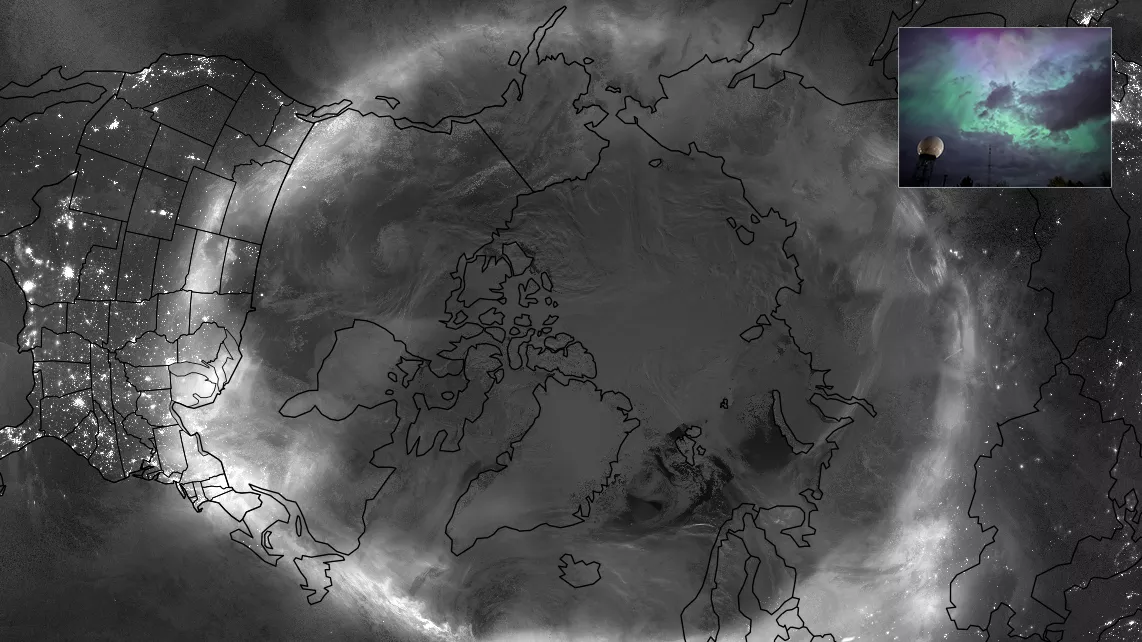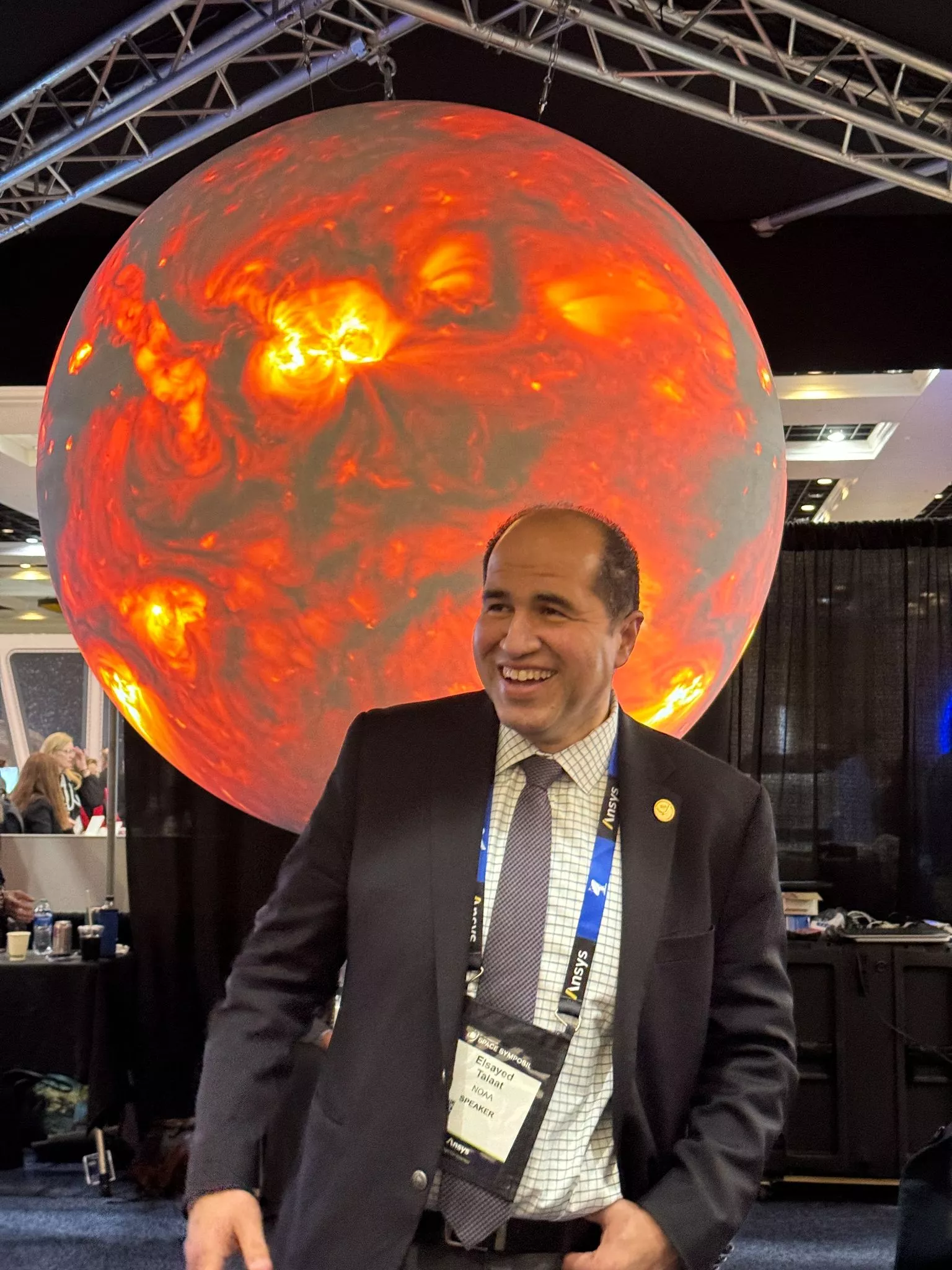
Photo courtesy of Daniel Jablonski, a NOAA/NWS Meteorologist at Marquette, MI
Auroras as Seen From Space and From Earth
In the larger image, NOAA’s Joint Polar Satellites System (JPSS) captured the stunning display of the aurora borealis that was visible during the May 2024 Jenn Gannon Solar Storm, the strongest geomagnetic storm in decades. The smaller image shows how viewers here on Earth experienced auroras from this G5-level storm at latitudes where sightings of auroras are uncommon.
Elsayed R. Talaat, Director, NOAA Office of Space Weather Observations, NOAA/NESDIS

"Auroras are a visual reminder of the largely invisible impacts of space weather on our Earth, and the importance of understanding and predicting these storms in order to minimize their harmful impacts on our daily lives, while still enjoying their beauty from a distance. I’ve been fascinated by auroras ever since I was a kid. I spent years researching the science behind space weather, and I came to NOAA to apply that science to make the observations that help save lives and protect property."
